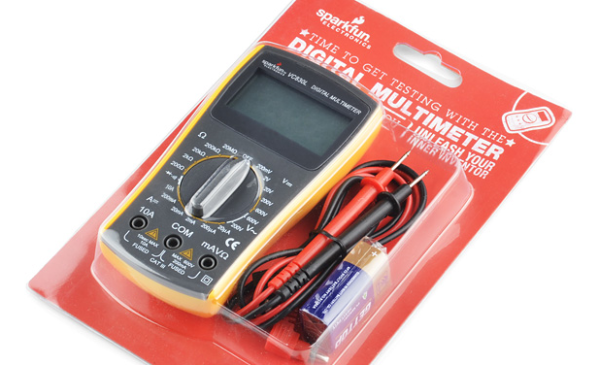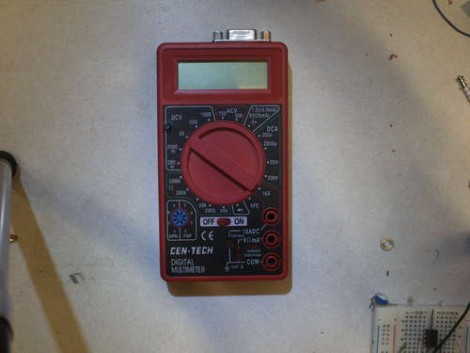Check out this SparkFun Digital Multimeter. Does it make your blood boil to see them ripping off Fluke by using the color yellow? From SparkFun’s side of the story that’s exactly what’s happened here. They have a shipment of 2000 of these things stuck in customs. The trademark being infringed upon can be found in their article. Fluke owns the trademark on multimeters with a dark face and yellow border. Great. This seems like a wonderful idea, right up there with Apple owning tablets that are shaped like a piece of paper.
Okay, so if you’re not crying big fat tears for Fluke being taken advantage of in this way let’s talk about more immediate issues than fixing trademark, patent, copyright, and all of the other screw-the-little-guy type of laws (not that SparkFun is necessarily the little guy but you know what we mean). The DMMs sitting in a warehouse are costing SparkFun $150 per day. We believe they have no option of choosing a warehouse with a lower cost as we must be talking a pallet or two, right? The only two options they do have are shipping them back to China where they were manufactured, or having them destroyed. The former will cost more in re-import tariffs than the cost of the product, and the latter comes with a $150/hour disposal fee and no metric on which to judge how long it would actually take. We hate seeing this kind of waste, but sure enough 2000 DMMs are headed for the shredder in a couple of days.
We know you already have your flaming sword in hand, but simmer down for just a second. Fluke makes great products, ask anyone. And companies the world over defend their trademarks. Hopefully there will soon be a positive response from Fluke on this one. If you would like to politely encourage them to do the right thing we found Fluke’s Facebook page URL in the SparkFun comments thread. Both are worth browsing.
[Thanks Chris via Reddit]















